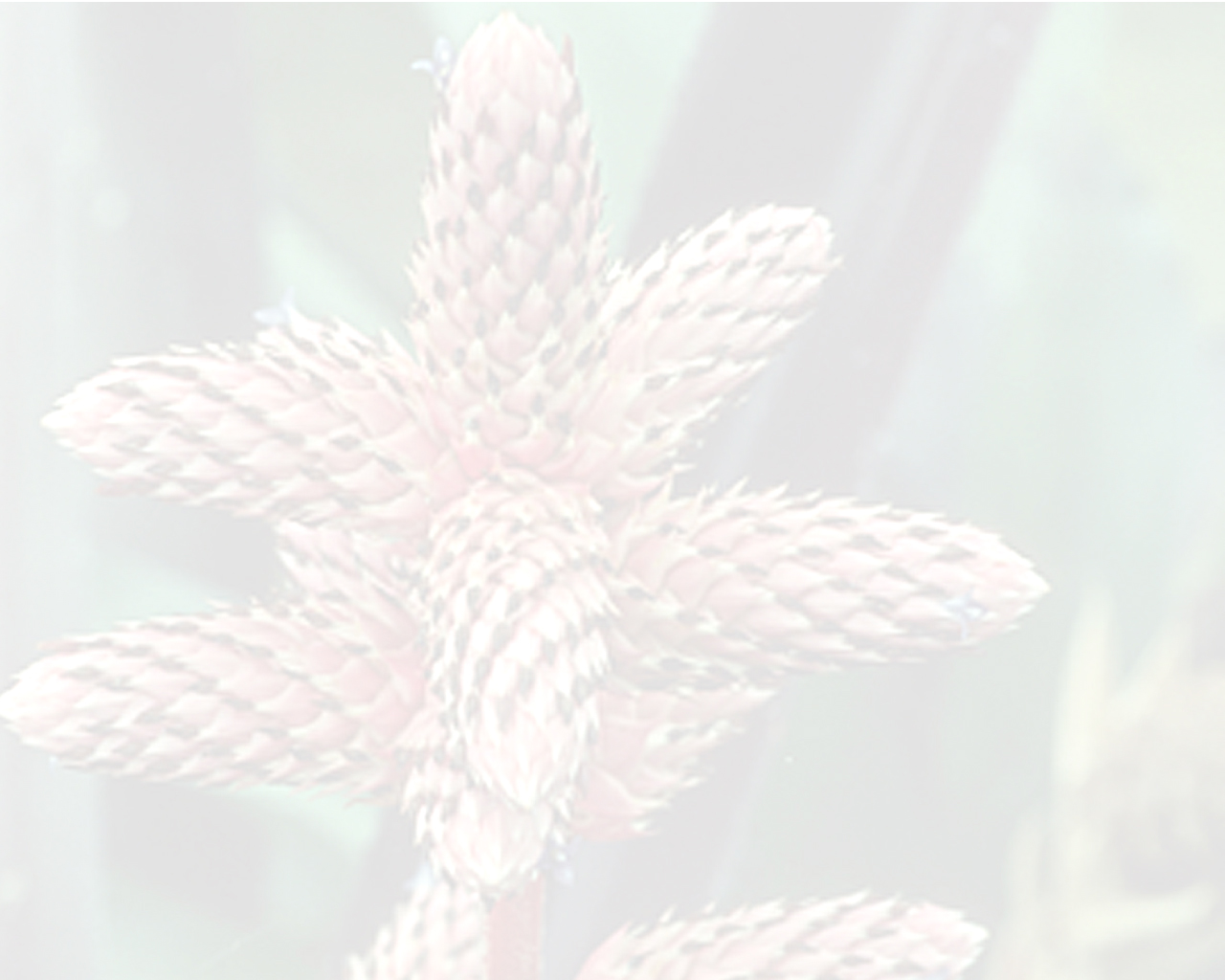


plant terrestrial, flowering 100–150 cm tall. leaves ca 30, cori¬aceous, forming at base a narrow funnelform rosette; sheath ovate to elliptic, 17–20 x 9.5–10.5 cm, densely brown-lepidote on both sides toward the base and dark castaneous; blade nar¬rowly sublinear-triangular, suberect to suberect-arcuate, not nar¬rowed at base, 35–60 cm long, 3–4 cm wide at base, green or when full exposed yellow to reddish-purple mainly toward the apex, inconspicuously white-lepidote abaxially, nerved, adaxially glabrescent, apex acuminate, ending in a stout pungent spine 7–13 mm long, margins densely (toward the base) to laxly (toward the apex) spinose, spines narrowly triangular, uncinate, antrorse to (mostly) retrorse, dark brown 1–4 x 1–2 mm, 2–15 mm apart. inflorescence: peduncle erect, 55–60 cm long, ca 0.7 cm in diameter, greenish, white lanate; peduncle bracts sublinear-lanceolate, acuminate-¬caudate, 7–10 x 2–2.5 cm, stramineous, papyraceous, finely nerved, entire, imbricate, slightly shorter to often exceeding the intern¬odes but not completely covering the peduncle, inconspicuously white-lepidote with trichomes fimbriate; fertile part narrowly pyramidal, paniculate, 4-pinnate at base, twice-branched and once-branched toward the apex, 35–50 cm long, 12–23 cm in diameter at base, erect, rachis white lanate, reddish-rose; primary bracts resembling the upper peduncle-bracts but smaller, subtriangular-¬lanceolate, acuminate-caudate, 4–7 x 1.4 cm, suberect with the branches, slightly shorter to often exceeding the stipes but dis¬tinctly shorter than the primary branches; primary branches suberect, the basal ones 7–22 cm long, laxly (the basal ones) to densely (the upper ones) arranged, stipes 1.5–7 cm long, 0.5–0.6 cm in diameter, slightly complanate, reddish-rose, white lanate, with 3 to 8 shortly stipitate to sessile secondary branches equally distributed to densely clustered at apex, the median to upper primary branches 2.5–7 cm long, shortly stipitate to sessile, with 1 to 5 sessile secondary branches, the primary branches at the extreme apex resembling the secondary branches; secondary bracts narrowly ovate- subtriangular, acuminate-caudate, to resembling the floral bracts, shorter than the secondary branch¬es, finely nerved, entire, sparsely lanate mainly at base, ecarinate to obtusely carinate at apex; secondary branches suberect, ovoid to cylindrical, terete, 2.5–6 x 1.3–2 cm, sessile, bearing up to 2 tertiary strobili, 5- to 17-flowered; floral bracts broadly subtriangular to suborbicular, thinly coriaceous, acute and ending in a narrowly triangular-mucronate 4–5 mm rigid apex, suberect toward the apex, equaling to slightly exceeding the sepals, 13–16 x 13–14 mm, rose-reddish, pale lanate mainly near the base and the apical margins, distinctly nerved, entire, convex, ecarinate to obtusely carinate toward the apex. flowers ca 18 mm long, sessile, densely and polystichously arranged, odorless; sepals oblong-ovate, strongly asymmetrical with a rounded wing slight¬ly shorter to equaling the midnerve, 8 x 4.5–5 mm, with mucro ca 1 mm long at apex, subfree, glabrous or nearly so, entire, rose-¬reddish, the adaxial ones obtusely carinate; petals narrowly sub¬spatulate, apex subacute to narrowly obtuse, ca 13.5 x 3.5 mm, free, lilac, forming at anthesis a nearly tubular corolla except for the suberect apex, bearing 2 appendages ca 5 mm above the base, free lobes obovate, irregularly dentate, ca 1.5 x 1mm. stamens included; filament slightly complanate and dilated toward the apex, lilac-hyaline, the antepetalous ones adnate to the petals for ca 5 mm, the antesepalous free; anther ca 4 mm long, sublinear, base obtuse, apex long apiculate, dorsifixed near the middle; pollen broadly ellipsoid, multiporate, pores small, exine perforate but appearing psilate; st igma conduplicate-spi¬ral, fusiform, lobes fimbriate, white. pistil: ovary ca 5 mm long, ca 6 mm in diameter at apex, pale lanate mainly toward the base, greenish; placentation apical, ovules obtuse; epigynous tube incon¬spicuous. fruits unknown.Edited from (30-12-2014): Siqueira & Leme 2007. Fragments of the Atlantic Forest of Northeast Brazil - Biodiversity, Conservation and the Bromeliads .